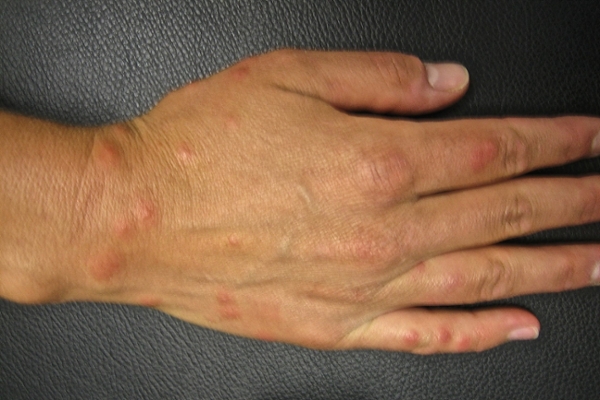
Itchiness tends to fade after about a week, which Caussey can speak to, without any risks of serious health consequences. There are no signs at the lake currently warning of the parasite’s presence, but the spokesperson said they will post one if they find it to be an issue.īellinger said swimmer’s itch is unfortunate, but “really not a big deal” for most people. They said anywhere between 50 to 100 people will visit the lake to enjoy the water during the week, and about 300 on busy weekends. Everyone on TikTok was like, ‘you're not supposed to swim in there’ and all this stuff, but there were so many people.”Ī spokesperson for the Austin water rental company Live Love Paddle, which services Lady Bird Lake, told BuzzFeed News that the call was the company’s first time hearing about swimmer’s itch. If you’ve encountered the larvae before, a rash can appear within minutes to days after swimming in contaminated water.Ĭaussey, who also posted about her experience on TikTok, said hundreds of other people were swimming in the lake with her, including employees who stood in the water to help people with their rentals. It takes repeated exposure to the tiny parasites before your immune system recognizes the invaders, setting off the reaction. But not before triggering an incredibly annoying and itchy allergic reaction.īut why do some people develop swimmer’s itch while others who spend time in the same waters don’t? It simply comes down to a person’s own sensitivity to the parasitic infection, Brent Bellinger, a senior environmental scientist overseeing the lakes in Austin, told BuzzFeed News.īecause it’s an allergic reaction, not everyone who encounters or is attacked by the larvae will develop a rash. Since humans are not the normal host - they prefer to invade birds or nonhuman mammals’ bodies - this is the end of the parasites’ life cycle and they soon die. The snails, once infected, release their own larvae that can infect people by burrowing into their skin. Tiny larvae, which tend to congregate in shallow waters by shorelines, hatch from these eggs and instantly look for their next host: a specific species of aquatic snail.

The parasites produce eggs that are then released via the animals’ feces. The parasites that cause swimmer’s itch are called cercariae, and they naturally live in the blood of animals such as ducks, geese, swans, and raccoons that live in or around lakes, ponds, and oceans. It’s also sometimes known as clam-digger’s itch or duck itch. It can happen anywhere people frequently swim, either fresh or saltwater, with the right combination of conditions. The rash is called swimmer’s itch, or cercarial dermatitis, and it’s actually a pretty common occurrence in the summer across the US and around the world. It wasn’t until one of her friends sent her a TikTok of another woman who came down with a similar-looking rash after paddleboarding in the same lake, around the same time, that she realized she was having an allergic reaction - to a microscopic parasite. “I did not think it was from the water,” said Caussey, who initially thought she was having an allergic reaction to her aunt’s cats. The next morning, however, she woke up with an extremely itchy red rash all over her legs that soon spread to her arms. After two hours, the group went home and showered immediately, Caussey told BuzzFeed News. The 19-year-old didn’t think twice before hopping into the water at Lady Bird Park, also known as Town Lake, to paddleboard with some friends. The treatment for the itching and redness are antihistamines and corticosteroid cream.Reagan Caussey, a Dallas resident, decided to visit her aunt in Austin last month to kick-start her summer with some fun under the sun.
#Swimmers itch dogs skin#
tingling, burning, or itching of the skin.Here are some symptoms of swimmers itch, according to the CDC: The swimmers itch is not contagious, and they aren’t harmful as long as the bumps don’t become infected, but the itching can be miserable for a couple of days. It’s important to note that humans aren’t the target - birds are - but the microscopic larvae can get into the swimmer’s skin and can cause an allergic reaction. The eggs then hatch and invade snails where they multiply into the form that can burrow into a person’s skin. It produces and egg that can be passed on in the feces of those infected animals. The parasite lives in the blood of infected animals like ducks, geese, swans and mammals like muskrats and raccoons.

(NEWS10) - If you plan on taking a dip in a lake or a beach this summer, beware of the “Swimmer’s Itch.”


 0 kommentar(er)
0 kommentar(er)
